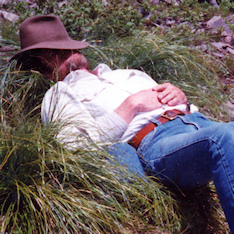Windows tweak: Revealing file extensions
One of the first things I do when I’m setting up a computer is tell Windows to reveal all the file extensions.
At base, a file name has two parts: the actual name you assign to the file and its extension. Think of an extension as the part of the name that identifies the file’s type. For example, suppose you create a Word document named “Newsletter”. The name of the file on disk is “Newsletter.doc” (or maybe “Newsletter.docx” if you’re using Word 2007). The “.doc” (or “.docx”) part is the file’s extension. It tells Windows that the file is a Word document and that it should be opened with Microsoft Word and not some other program.
Unless you tell it not to, Windows hides the extensions for all recognized file types. So, if you look in your documents folder, you will see your Word document listed as “Newsletter”, not “Newsletter.doc”. Windows is trying to be “helpful,” here. The idea is that, if you saved your document as “Newsletter”, it is less confusing if it simply shows up as “Newsletter” on disk.
Now, there are a couple of problems with this.
Scammers sometimes take advantage of this extension-hiding feature to make infected email attachments look harmless — sort of. For instance, they might create an infected email attachment named “bargains.txt.exe”. The “.exe” part means that it is a program but, if Windows is hiding extensions, the name will appear as “bargains.txt”. The bad guys are hoping that some folks might be inattentive, think, “Hey, it’s just a harmless text file,” and open the attachment. Oops.
Also, you might occasionally want to be able to edit an entire file name, including the extension. For instance, I sometimes do this if I am dealing with an old or damaged file that I’m not quite ready to delete. Giving it a “.old” or “.bad” extension ensures it won’t be opened or run accidentally until it’s time to send it to that big bit-bucket in the sky.
Bottom line: Revealing file extensions doesn’t hurt anything, it increases your security slightly and it might come in handy some day.
Here’s how it’s done:
Windows XP and earlier
- Open a folder. The “My Documents” folder is as good a choice as any. (I.e., click the Start button; click “My Documents”.)
- Click the “Tools” menu and choose “Folder Options…”
- Click on the “View” tab. In the “Advanced settings” section, clear the checkmark next to “Hide extensions for known file types”.
- Click the “OK” button.
Windows Vista & Windows 7
- Open a folder. The “Documents” folder is as good a choice as any. (I.e., click the Start button; click “Documents”.)
- Press the “Alt” key (located on either side of the space bar). This will make the menus appear.
- Click the “Tools” menu and choose “Folder Options…”
- Click on the “View” tab. In the “Advanced settings” section, clear the checkmark next to “Hide extensions for known file types”.
- Click the “OK” button.
That’s it. You’re done. Any time you open a file folder, you’ll be able to see complete file names instead of the user-remedial versions.
From → General, Operating Systems
